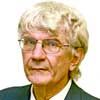Next Tuesday’s elections in the United States finds US-Argentine relations little more than two years away from their bicentennial. Formal bilateral ties date back to January 27, 1823 – predating the Monroe Doctrine by over 10 months and long before Argentina was called Argentina. The United Provinces of the River Plate recognised by Washington back then (13 of them, as against 23 today plus the Federal Capital) housed barely half a million people while 24 of the current 50 states had been admitted to the Union with the 1820 census enumerating a total population of 9,638,453 people – less than the number of Covid-19 cases in the United States today if the 1,538,022 slaves are subtracted. Neither country was really G20 material back then.
Little enough to report about the ties for much of the 19th century. Argentina might have liked them to be more active in the form of invoking the Monroe Doctrine against British seizure of the Malvinas Islands in 1833 or against the Anglo-French naval expedition defending creditor interests in 1845 (Vuelta de Obligado) but no such luck. A commercial treaty was concluded in 1853, the year of the constitution so strongly modelled on the US.
Americans were already finding their way to the other end of the hemisphere but went unnoticed, merging into the much larger British community. Thus the parents of William Henry Hudson were born in Boston, only for their son to become an icon of the Anglo-Argentine identity and die in London. Ralph Newbery, father of the aviation pioneer Jorge Newbery (after whom the downtown airport is named) and a dentist advertising in the very first edition of the Buenos Aires Herald in 1876, was born in Missouri. As anybody listening to Franklin Delano Roosevelt broadcasts might realise, there were less differences between the accents across the Atlantic in former times.
There were also some more violent American arrivals. A handful of Confederate veterans who just could not stop fighting joined the 1865-1870 War of the Triple Alliance with Paraguay although far more went to much closer Mexico. Butch Cassidy and the Sundance Kid robbed banks in Patagonia (mostly Chubut) and San Luis between 1901 and 1905 before perishing in Bolivia in 1908.
US isolationism did not help early relations, leaving Argentina firmly within the British imperial economic orbit by default, but this began to change with the First International Conference of American States in Washington DC in 1889-1890, leading to the creation of the Pan American Union in a Buenos Aires celebrating Argentina’s centenary in 1910. Yet this process lost traction in the first half of the 20th century when neither an elected Radical government in the First World War nor a military regime containing the seeds of Peronism in the Second, contrasting in almost everything else, would budge from neutrality – a decision which was to leave Argentina even further behind giant neighbour Brazil (the only Latin American country to send troops to Europe in both conflicts) in hemispheric and international consideration with fateful consequences to this day. Already in 1945 the US farm lobby, mixing its competitive interests with ideological arguments, tried to block Argentine entry into the United Nations, a move only frustrated by Argentina belatedly joining the Second World War for its last six weeks.
The very first of many Peronist electoral victories since then in 1946 brought relations with the USA right to the forefront since the campaign hinged on the slogan “Braden o Perón.” US Ambassador Spruille Braden was thus demonised as the incarnation of Yankee imperialism but in fact he came from the far left of the Democratic Party under former veep Henry Wallace (the Bernie Sanders of his times) and his obsessive concern was to save Argentina from the fascism which had just been defeated worldwide and which he identified, not inaccurately, with Perón, compiling a “Blue Book on Argentina” to document this belief. Identifying himself with the non-aligned movement enshrined at Bandung in 1955, Perón as president pursued a strict neutrality in the Cold War (“Ni yanquis ni marxistas, peronistas!”).
This changed dramatically after Perón’s fall in 1955 with support for various US initiatives during much of the next three decades ranging from John Kennedy’s Alliance for Progress to hostility towards Communist Cuba and military training for the Central American right. Arturo Frondizi became the first Argentine president to visit the United States in 1959 with his Washington counterpart Dwight Eisenhower returning the visit the following year (not a first in that direction – FDR was in Buenos Aires a few weeks after the biggest US landslide ever in 1936, when he won every state except Vermont and Maine).
The military dictatorships after the Second World War generally ran a fairly cosy relationship with Washington but the last and worst of them (1976-1983) managed to get that wrong along with so many other things. First, their “dirty war” ran afoul of the Jimmy Carter administration with a US Embassy diplomat F.A. “Tex” Harris (who died just before the pandemic eight months ago), playing a key role in recording human rights violations for the Herald’s Robert Cox and the outside world in general. Then in the 1982 South Atlantic War the Leopoldo Galtieri junta made the incredible assumption that Ronald Reagan would take their side against Margaret Thatcher’s Britain, perhaps misreading the “shuttle diplomacy” of Alexander Haig (who when asked why he kept returning to Buenos Aires when war seemed inevitable once replied: “Because the stakes are great,” easily misunderstood with a different spelling of “stakes”).
In the democratic period since 1983 Argentine public opinion has generally been almost equally divided into pro-American and anti-American strands (the latter among the strongest in Latin America) with just over 40 percent for each.
We are now entering the living memory of most adults with the last decade before the millennium featuring peso-dollar parity under convertibility and Carlos Menem’s “carnal relations” culminating in Argentina being designated a major non-NATO ally in 1998 – the late George Bush (1988, in the midst of a carapintada army mutiny) and Bill Clinton (1997) both paid presidential visits. The late Néstor Kirchner, the 10th anniversary of whose death has just been marked, made a strong start with George W. Bush on the basis of both having governed oil-rich economies (Santa Cruz and Texas) but then proceeded to humiliate him at the 2005 Summit of the Americas in Mar del Plata. The downward trend in relations only continued during the two terms of his wife, current Vice-President Cristina Fernández de Kirchner, with such clashes as her Foreign Minister Héctor Timerman personally taking a pair of pliers to a US aid package of police equipment at Ezeiza airport in 2011. US investment (over US$13 billion in that year, second only to Spain) has never been the same since in a stagnant Argentina.
Whether the improvement in relations during the pro-Western, pro-market administration of Mauricio Macri (who hosted both Barack Obama and Donald Trump) will be sustained by the pandemic-stricken Alberto Fernández presidency remains to be seen – a question which will not be answered especially by the result of next Tuesday’s vote.




















Comments